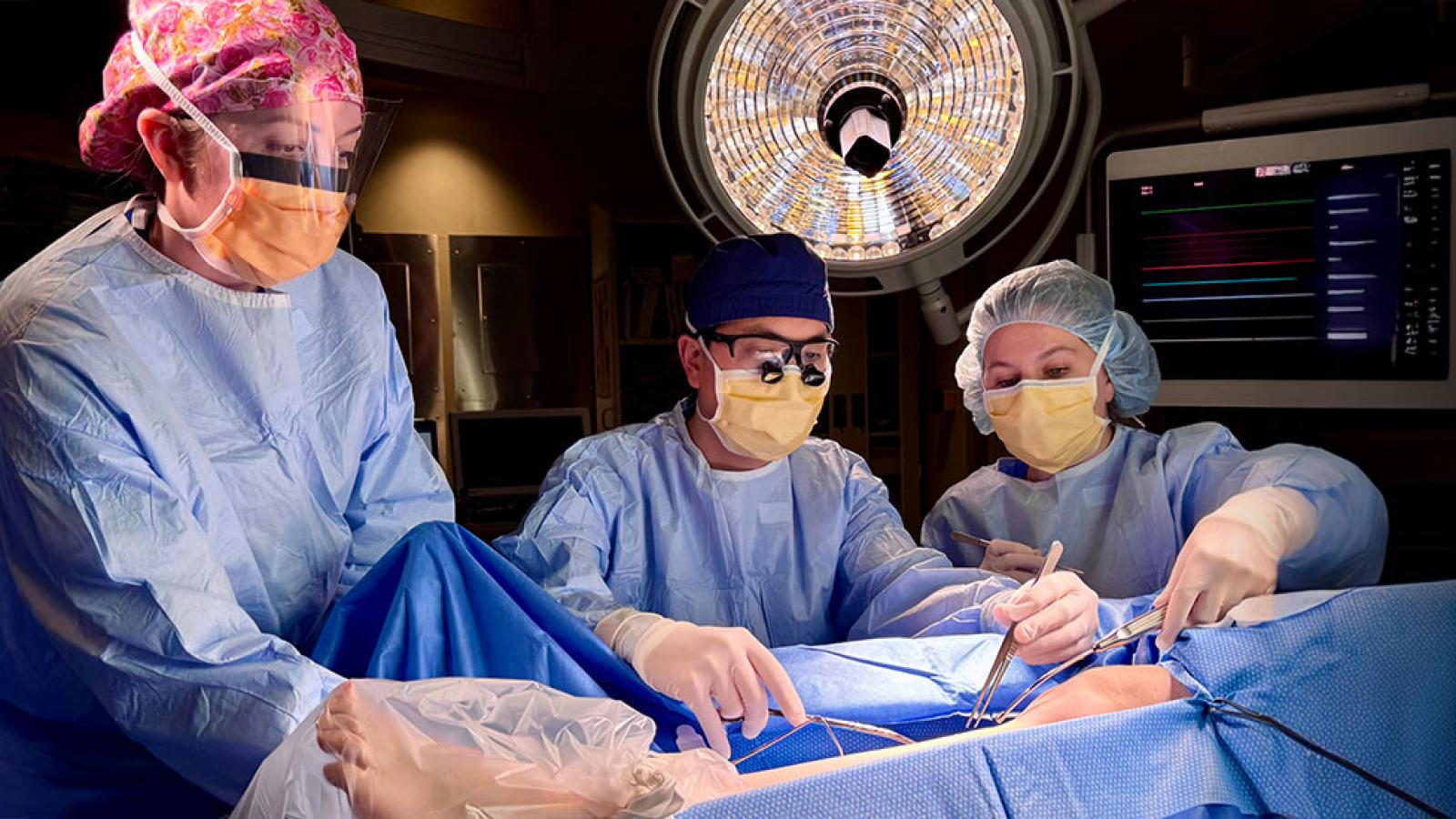Our team of vascular surgeons specializes in the evaluation and treatment of diseases that affect your circulatory system. This system includes the arteries, veins and lymph vessels. We also treat certain blood disorders such as abdominal aortic aneurysm (AAA), carotid artery disease, peripheral artery disease (PAD) and venous disease.
Our vascular surgeons perform the following surgical or minimally-invasive procedures to unblock arteries and veins and to restore proper blood flow:
- Abdominal aortic surgery
- Angiography, angioplasty, stenting and bypass for lower extremities
- Carotid angiography and stenting
- Dialysis access
- Endovascular repair of aortic aneurysm
- Peripheral vascular angiography and stenting
- Renal angiography and stenting
- Thrombolysis
- Varicose vein stripping and ligation
- Vascular access for hemodialysis
Screening for Abdominal Aortic Aneurysm (AAA)
Medicare offers a one-time, free screening for abdominal aortic aneurysm (AAA) to qualified seniors as part of its Welcome to Medicare physical. This physical must be conducted within the first 12 months of enrollment in Medicare. Qualified seniors are men who have smoked at least 100 cigarettes during their life, and men and women with a family history of AAA.
Vascular Surgery at Guthrie
- Board-certified vascular specialists: our vascular surgeons are specially trained in cardiovascular care and board certified.
- The largest and most experienced heart care team in the region includes advanced practice providers; nurses; therapists; and diagnostic technicians, all trained in specialized care for your heart.
- Guthrie Heart and Vascular Care Center, located in Guthrie Robert Packer Hospital, is a state-of-the-art space for heart disease testing and treatment. Located near the emergency department and ICU, there are private patient rooms, cardiac catheterization labs, and a hybrid operating room. The unit is centered around quick efficient care of our patients.
- Hybrid operating room: the vascular team can perform imaging studies in the sterile environment of the operating room. Patients do not need to move to another location in the hospital once a procedure has started. Additionally, having the ability to switch from minimally invasive to open procedures, if necessary, keeps the patient in the same room if the surgical team needs to change its approach. The vascular team can diagnose as well as perform cardiovascular interventions in one room.


